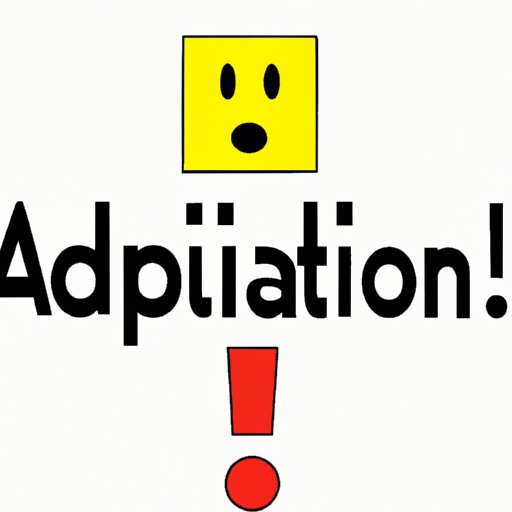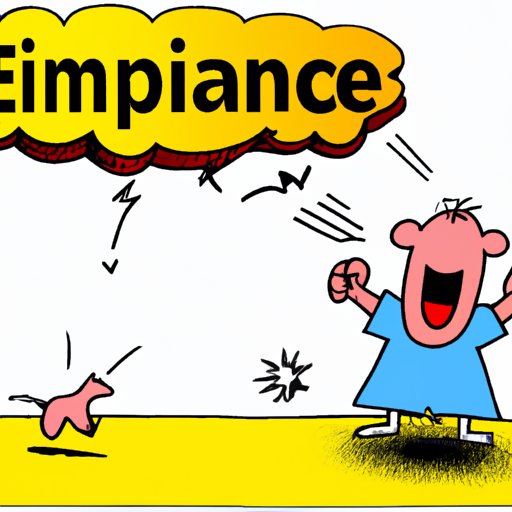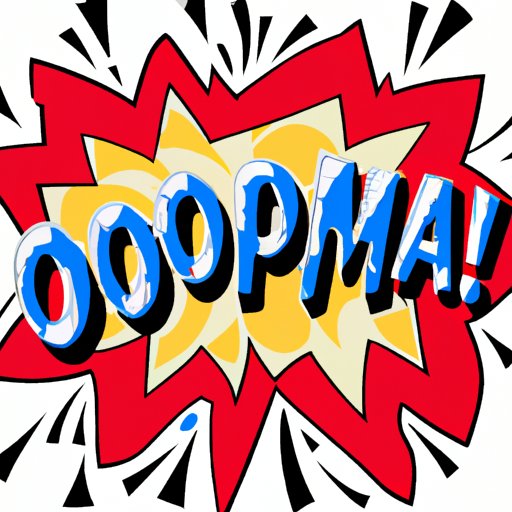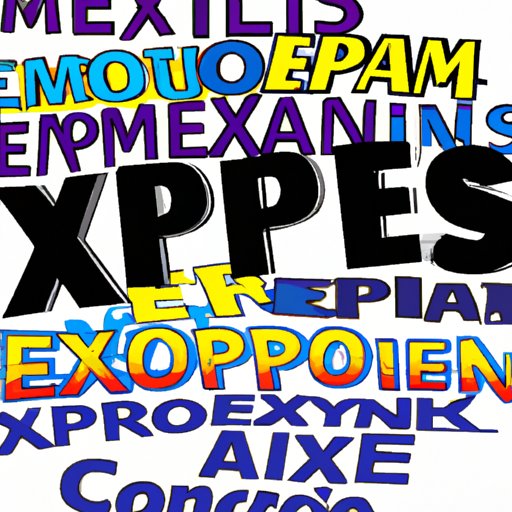Introduction
Expressing excitement in writing is an art that takes time and practice to perfect. Whether you’re writing a story, an article, or a blog post, it’s important to be able to show your readers just how excited you are about something. Doing so can help draw attention to your piece and make it more engaging for your audience.
In this article, we’ll explore some tips and examples for expressing excitement in writing. By the end, you’ll have all the tools you need to write pieces that truly capture the magnitude of your enthusiasm.

Use Exclamation Points to Emphasize Excitement
Exclamation points are one of the most common ways to express excitement in writing. They help emphasize the intensity of your feelings and draw attention to what you’re saying. As with any punctuation mark, however, it’s important to use them sparingly and appropriately.
When using exclamation points, try to limit yourself to one per sentence. This will ensure that your writing remains clear and easy to read. Additionally, avoid using multiple exclamation points (e.g., “Wow!!!”). This can come off as overly dramatic and detract from the impact of your writing.
Here are some examples of how you can use exclamation points to express excitement in writing:
- “I can’t believe it! I finally got accepted to my dream college!”
- “Oh my gosh! That roller coaster was so much fun!”
- “I’m so excited for our vacation next month!”
Incorporate Colorful Adjectives and Adverbs
Adjectives and adverbs can spice up your writing and help you convey your excitement more effectively. Adding descriptive words to your sentences can help paint a vivid picture of your emotions and make your writing more interesting for your readers.
When choosing adjectives and adverbs, try to select words that accurately reflect the intensity of your excitement. For example, instead of saying “I’m excited,” you could say “I’m ecstatic.” Similarly, instead of saying “He ran quickly,” you could say “He sprinted frantically.”
Here are some examples of how you can incorporate colorful adjectives and adverbs into your writing:
- “I was absolutely delighted when I found out I got the job.”
- “She screamed joyfully as she crossed the finish line.”
- “He was incredibly thrilled to receive his acceptance letter.”
Create an Excited Tone Through Words like “Thrilling”, “Amazing”, and “Awesome”
Words like “thrilling”, “amazing”, and “awesome” can help create an excited tone in your writing. These types of words evoke a sense of enthusiasm and can help bring your writing to life.
When using these words, be sure to choose ones that accurately reflect the intensity of your feelings. For example, if you’re describing something that’s particularly exciting, you may want to use the word “thrilling” instead of “interesting.”
Here are some examples of how you can use these words to express excitement in writing:
- “It was an amazing experience to watch the fireworks.”
- “The view from the top of the mountain was absolutely awesome.”
- “The ride was so thrilling that I screamed the entire time.”

Utilize Metaphors and Similes to Illustrate the Magnitude of the Excitement
Metaphors and similes can help illustrate the magnitude of your excitement in a creative and memorable way. Using these literary devices can help bring your writing to life and make it more engaging for your readers.
When writing metaphors and similes, try to think of creative comparisons that accurately reflect the intensity of your feelings. For example, instead of saying “I was very excited,” you could say “I was as excited as a child on Christmas morning.”
Here are some examples of how you can utilize metaphors and similes to express excitement in writing:
- “I was jumping for joy like a kangaroo.”
- “My heart was racing like a cheetah.”
- “My excitement was overflowing like a fountain.”

Utilize Onomatopoeia for a More Humorous Approach to Expressing Excitement
Onomatopoeia can add a humorous touch to your writing and make it more fun for your readers. Using words like “boom”, “buzz”, and “zing” can help bring your writing to life and capture the intensity of your feelings.
When using onomatopoeia, try to select words that accurately reflect the magnitude of your excitement. For example, if you’re describing something that’s particularly exciting, you may want to use the word “boom” instead of “click.”
Here are some examples of how you can utilize onomatopoeia to express excitement in writing:
- “I was zooming around the track with excitement.”
- “My heart was thumping with anticipation.”
- “The crowd was roaring with enthusiasm.”
Conclusion
Expressing excitement in writing can be a challenge, but with the right techniques, it can be done. In this article, we explored how to express excitement in writing by utilizing exclamation points, colorful adjectives and adverbs, thrilling words, metaphors, similes, and onomatopoeia. With these tips and examples, you’ll have all the tools you need to write pieces that truly capture the magnitude of your enthusiasm.
(Note: Is this article not meeting your expectations? Do you have knowledge or insights to share? Unlock new opportunities and expand your reach by joining our authors team. Click Registration to join us and share your expertise with our readers.)
